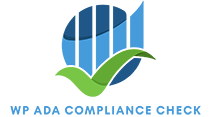
Prenatal Care
We have the option to provide virtual (phone or video), as well as in-person prenatal visits. Not every prenatal visit can be completed virtually but if you're interested in this option, please let your provider know.
- A medical assistant will obtain your vital signs and inform your provider (doctor, midwife, or nurse practitioner) that you are ready.
- Your provider will see you in your clinic room.
- A medical assistant will draw any blood that may be needed.
- Your next visit will be scheduled either as an in-person visit or a virtual visit as decided by you and your provider.
- You will be scheduled with a specific appointment time for your phone or video visit, just like an in-person visit.
- If you are scheduled for a telephone visit: At the time of your appointment, a provider (doctor, midwife, or nurse practitioner) will call you on your phone and will discuss all of the information that would be covered at your visit had it been done in person.
- Read these step-by-step instructions on how to get started for a MyChart video visit
Getting ready for your virtual visit
Find instructions on how to use equipment
If you have a blood pressure cuff and/or thermometer at home, your provider would like to know your temperature and blood pressure at the time of your virtual visits. You can watch the following videos for instructions on how to use the equipment
Educational Materials
Prenatal care
- Your care during pregnancy - English or Spanish
- Managing your healthcare with MyChart
- Third trimester (weeks 28 - 36) education - English or Spanish
Your and baby's health
- Choose your fish brochure - English or Spanish
- Kick counts - English, Somali, Spanish
- Oral health during pregnancy - English or Spanish
Education and resources
Additional Services During your Pregnancy
- Acupuncture during pregnancy
- Breastfeeding support even before you have your baby
- Childbirth education videos (use password "hcmc")
- Chiropractic during pregnancy
- Women's health physical therapy - your pelvic health during and after pregnancy or pain you are experiencing, including helpful pelvic health videos
Prenatal Nutrition and Mental Health
There a lot of things to prepare before the arrival of your baby. This can be both an exciting and anxious time. We've prepared nutrition and mental health resources here to keep you healthy, mind and body.
Nutrition
- Minnesota Department of Health
Nutrition during pregnancy in English, Spanish, and Somali - United States Department of Agriculture
Tips for pregnant moms - The American College of Obstetricians and Gynecologists
Nutrition during pregnancy - Budget Bytes
Delicious recipes for small budgets and emergency preparedness
Tips for managing anxiety, worry, and stress
Three things to help your anxiety
- Limit your sugar, alcohol and caffeine intake. Because anxiety is physiological, stimulants may have a significant impact.
- Check in with your toes. How do they feel? Wiggle them. This kind of refocusing can calm you and break the anxiety loop.
- When you're in the middle of an anxiety episode, talking or thinking about it will not help you. Try to distract yourself with your senses: Listen to music, jump rope for five minutes, or rub a piece of Velcro or velvet.
Remember: Anxiety happens in your mind and your body so trying to think your way out of it won't help.
Three things to help your worries:
- Give yourself a worry budget,” an amount of time in which you allow yourself to worry about a problem. When that time is up (start with 20 minutes), consciously redirect your thoughts.
- When you notice that you're worried about something, push yourself to come up with a next step or to take action.
- Write your worries down. Research has shown that just eight to 10 minutes of writing can help calm obsessive thoughts.
Remember: Worry is helpful only if it leads to change, not if it turns into obsessive thoughts.
Three things to help your stress
- Get exercise. This is a way for your body to recover from the increase of adrenaline and cortisol.
- Get clear on what you can and can't control. Then focus your energy on what you can control and accept what you can't.
- Don't compare your stress with anyone else's stress. Different people respond differently to stressful situations.
Remember: Stress is a biological response that is a normal part of our lives.
(Source: New York Times)
Staying connected
We encourage all of our patients to be on MyChart. MyChart allows us to communicate with you and helps you keep track of your appointments. You can even see lab results in your MyChart account. If you do not currently have a MyChart account, set one up here or call 612-873-5600.

